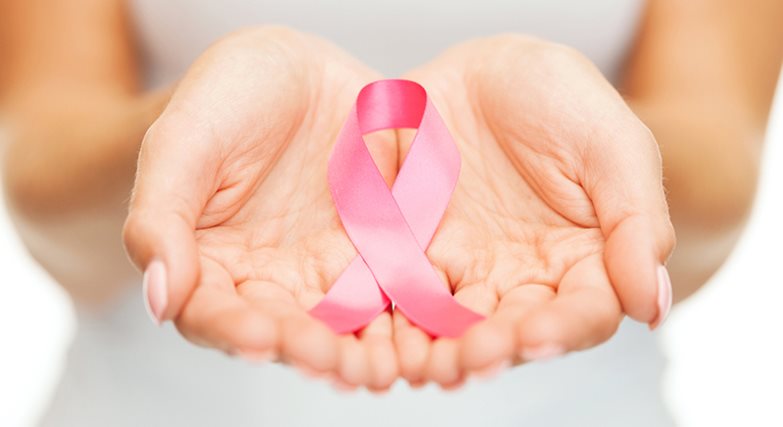Is All Breast Cancer The Same? A Paradox: Estrogen's Relationship to Breast Cancer

Most women are aware of a link between estrogen and breast cancer. Yet, there are three types of breast cancer: ductal (80%), lobular (10%), and inflammatory (1% to 5%), all of which have different receptor characteristics that guide treatment. Approximately 75% of breast cancer is estrogen-receptor (ER) positive. However, there are conditions in which estrogen both fuels and, at other times, kills ER-positive breast cancer cells. One type of breast cancer does not even recognize estrogen at all. It is estimated that in 2015, there will be 231,840 new cases of breast cancer and 60,290 cases of breast carcinoma in situ. And it is predicted that 40,290 women will die of this disease (cancer.org). Understanding the types of breast cancer offers promise for improved surveillance, prevention, and more effective treatments.
Observers noted as early as 1896 that the ovaries were related to breast cancer since some women with breast cancer improved after their ovaries were removed. Yet, it was not until 1923 that estrogen as a hormone was discovered. While estrogen can stimulate growth of certain breast cancer cells, if these cells are deprived of hormones for five years by anti-estrogen medication, they are made vulnerable to being killed by estrogen through cell apoptosis. This may explain the cancer-killing effect of Diethylstilbestrol (DES) in the 1960s when one-third of women with breast cancer who were given the drug improved.
Duration of exposure to estrogen over a woman’s lifetime relates to the risk for developing ER-positive breast cancer. This form of breast cancer is more common in women with early onset menses, late onset menopause, and nulliparity or having children later in life. All of these situations involve prolonged menstrual cycling and estrogen exposure. Other risk factors are lack of breastfeeding, alcohol consumption (which increases estrogen production), and obesity, since adipose cells produce estrogen. Additional factors are smoking, family history, and genetic status.
The association of ER-positive breast cancer with lifelong estrogen exposure helps explain why such women usually are older at cancer onset. In the Women’s Health Initiative (WHI), the average age of participants was 63. Estrogen in the form of Premarin® plus the synthetic progestin, medroxyprogesterone (PremPro®), given to women who still had their uteruses, increased overall breast cancer risk. Yet, in women without a uterus, estrogen replacement therapy alone (ERT) decreased the overall breast cancer risk. Whether the synthetic progestin in the first group contributed to the increase in breast cancer remains unclear. In the second group, estrogen was not started until nearly ten years after menopause, so a period of estrogen deprivation preceding the estrogen-only exposure may have induced apoptosis of nascent cancer cells.
Certain other breast cancers do not express the common hormone receptor genes for estrogen, progesterone, or the newer marker, human epidermal growth factor (HER2). Called triple-negative breast cancer (TNBC), this cancer, first reported in 2005, often occurs in younger women, even during their reproductive years and appears to be more aggressive. In one study, 33.8% of women under 40 with breast cancer were TNBC, while only 21.5% were ER positive. Yet, for all types of breast cancer, 23.9% of women were younger, while 76.1% were older.
Understanding the characteristics of these breast cancers challenges current protocols for surveillance and management. Controversy exists as to when to begin providing mammography to women. Administering estrogen after five years of anti-estrogen treatment may provide additional protection for ER-positive breast cancer survivors. In fact, ongoing studies of anti-estrogen treatment alternating with ERT or “drug holidays” may answer some of these questions. Medical science is built on questions leading to answers that ask more questions. Progress in breast cancer research exemplifies this process.
By James Woods, M.D. and Elizabeth Warner, M.D.
Dr. Woods treats patients for menopause at the Hess/Woods Gynecology Practice.
Disclaimer: The information included on this site is for general educational purposes only. It is not intended nor implied to be a substitute for or form of patient specific medical advice and cannot be used for clinical management of specific patients. Our responses to questions submitted are based solely on information provided by the submitting institution. No information has been obtained from any actual patient, and no physician-patient relationship is intended or implied by our response. This site is for general information purposes only. Practitioners seeking guidance regarding the management of any actual patient should consult with another practitioner willing and able to provide patient specific advice. Our response should also not be relied upon for legal defense, and does not imply any agreement on our part to act in a legal defense capacity.
James Woods |
1/29/2016
You may also like